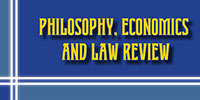Іvan BOGATYREV
D.Sc. in Law, Professor, Honored Worker of Science and Technology of Ukraine, Academician (Stepan Demianchuk International University of economics and humanities), Ukraine
ORCID iD: orcid.org/0000-0003-4001-7256
vanbogatyrov@gmail.com
UDC 343.8
DOI :10.31733/2786-491X-2021-2-101-108
Keywords: crime, offense, convicted person, employee, institution, punishment
Abstract. Penitentiary crime as a social phenomenon inherent in places of non-freedom in Ukraine is described in the article. The opinions of foreign and domestic scientists on the concept of penitentiary crime are analyzed. Penitentiary crime in places of incarceration is identified according to the typology of the object of a criminal offense. The authorʼs definition of penitentiary crime is formulated.
We have identified crime in places of non-freedom according to the typology of the object of a criminal offense committed in places of non-freedom, dividing it into the following groups: 1) penitentiary criminal offenses; 2) violent criminal offenses; 3) narcotic criminal offenses; 4) criminal offenses against property; 5) official and corruption offenses. All of them together characterize penitentiary crime.
References
- About the activity of the children of protection, the sight and safety of the criminal viconious have been established in 2017. Kyiv, Ministry of Justice. (in Ukrainian).
- Acts of nutrition for optimizing the efficiency of the central authorities of the government of the system of justice: a resolution of the Cabinet of Ministries of Ukraine, 2016 p, no. 343, https://zakon.rada.gov.ua/laws/show/343-2016-%D0%BF#Text. (in Ukrainian).
- An analytical call for the results of the visits prior to the establishment of the State Criminal and Victory Service of Ukraine in 2019. Kyiv. (in Ukrainian).
- Babenko, А., Busol, O., & Kostenko, O. (2018). Criminology: pedagogue. Kharkiv: Pravo. (in Ukrainian).
- Becccaria, C. (2014). On transgressions and punishments. Kyiv: InYure. (in Ukrainian).
- Bogatyrov, A. (2019). Anticriminogenic infusion on malignity in the places of unfreedom of Ukraine. Kherson: Helvetika. (in Ukrainian).
- Bogatyrov, I., & Puzirov, M. (2012). Foreign ambush of penitentiary criminology. Bulletin of Criminological Association of Ukraine, 1, 170-178. (in Ukrainian).
- Juzha, О., Vasilevich, V., Chernyi, V., Chernyavsky, S. et al. (2020). Criminology. Kyiv: Maslyukov, (in Ukrainian).
- Dzhuzha, O. et al. (2004). Criminology. Kyiv: Precedent. (in Ukrainian).
- Orel, Yu. (2016). Criminality for malpractice against normal agency and establishment of the penitentiary service of Ukraine. Kharkiv: V spravi. (in Ukrainian).
- Khalymon, S. et al. (2021). Characteristic of a female recidivist: qualitative empirical analysis (view from Ukraine). International Journal of Offender Therapy and Comparative Criminology, https://doi.org/10.1177/0306624X211023919. (in Ukrainian).
- Kolb, O., Barchuk, A., & Kulichuk, M. (2000). Prevention of crime in places of imprisonment. Lutsk. (in Ukrainian).
- Kudryavtseva, V., & Eminov, V. (1995). Criminology. Moscow: Advocat. (in Russian).
- Kuznetsova, N. (1969). Crime and crime. Moscow. (in Russian).
- Pottier, P., (2015). Trends in Corrections: Interviews with Corrections Leaders Around the World, 2, 3-16. Boca Raton.
- Sutherland, E., & Cressey, D. (1966). Principles of Criminology. Chicago: Lippincott.
